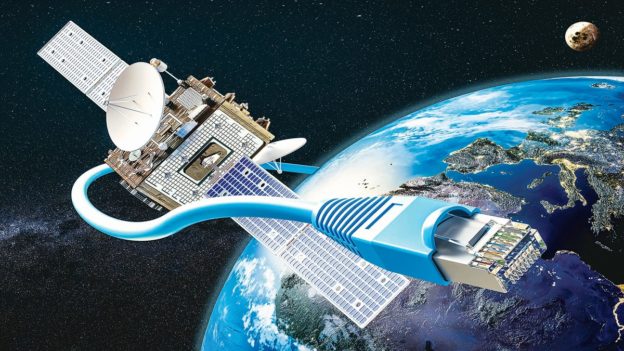With the aim of launching internet services in remote regions, many companies have entered the satellite-based internet space in India
A lot is happening in the satellite internet space in India right now, and it would be no exaggeration to call it the next big thing after the 5G services rollout. Several communication bigwigs, from Elon Musk’s Starlink to Mukesh Ambani’s Reliance Jio, have made strides to offer satellite-based internet services to remote corners of the country where cable and fibre internet are yet to reach. A satellite internet connection provides high-speed internet connections using satellites orbiting in space.
The frontrunner
In September, Hughes Communications India, in partnership with the Indian Space Research Organisation (ISRO), announced the launch of its first high throughput satellite (HTS) broadband internet service in India. Hughes Communications India is a joint venture entity between Hughes Network Systems, US, and Sunil Mittal’s Bharti Airtel. The launch is aimed at offering satellite internet services in India’s remote locations.
For the service, it will use ISRO’s geosynchronous satellite (GSAT)-11 and GSAT-29. The Indian space research body launched the two satellites in 2018, intending to offer higher bandwidth satellite connectivity. Following the launch, K Sivan, then ISRO chairman, said the satellite is capable to offer a peak data bandwidth of 14 Gbps through satellite networks. The service launched by Hughes Communications India reportedly can offer internet connectivity bandwidth of up to 100Mbps. Notably, Bharti Airtel in October became the first company to launch 5G services in India.
In the fray
Joining the still nascent satellite internet space in the country is Reliance Jio, which announced its foray into this space in February this year. For this, it has partnered with Luxembourg-based SES, under the name Jio Space Technology Limited. In September, the company received the department of telecommunications’ (DoT) nod to start high-speed broadband-from-space services in the country.
Also Read: One Nation, One Web: ISRO and One Web Rival Elon Musk’s Starlink with latest launch
While announcing the joint venture with SES, the company had said the satellite internet would allow it to roll out internet service in India’s remotest locations.
Starlink’s India woes
Elon Musk’s Starlink is among the frontrunners in the satellite internet space but has found it tough to expand its base in the Indian market. Despite rolling out its services in remote Antarctica and having started taking pre-bookings in India last year, the company had to stop the same following the DoT’s snub over the lack of licensing. The telecom department last year had warned people against buying Starlink’s internet services and told the company to “get a license before offering Satellite-based services”.
Recently, it has applied for global mobile personal communication by satellite services (GMPCS) licence to the DoT to roll out its internet services, as per reports. Notably, a GMPCS licence does not mean it would start launching the services but would need the department of space’s approval and buy the relevant spectrum.
Reportedly, Starlink has around 3,000 low-level satellites in space for internet service, with a plan of using about 10,000 to expand the service in more areas.
Advantages & disadvantages
The biggest advantage of satellite-based internet service is that it can cater to the world’s remote locations where cable and fibre internet is difficult to reach. This is how it works: The internet service provider (ISP) first sends the internet signals to the satellites. They then come back to the user and are intercepted by the satellite dish, which, in turn, is connected to a modem, which helps with the signal on the user’s computer.
Despite the sophisticated technology involved, it has several disadvantages compared to the cable and fibre internet, which we normally use. First comes speed. The satellite-based internet is much slower compared to its cable counterpart. Although it might not be a big issue for simple tasks like web browsing and emailing, it can be a major drawback for tasks like online gaming.
Satellite internet also has a high latency, which means that the time it takes is more between sending and receiving signals. It is also costlier than cable and fibre internet. However, the latter is not standardised, which means that the data rates differ across countries. Also, weather conditions might disturb the satellite services, but the disruption might be faint.
The global satellite internet market is still small but is growing. In 2020, it was pegged at $2.93 billion and is expected to rise to $18.59 billion by 2030, as per a report.
https://www.financialexpress.com/industry/technology/satellite-internet-space-heating-up/2758445/





